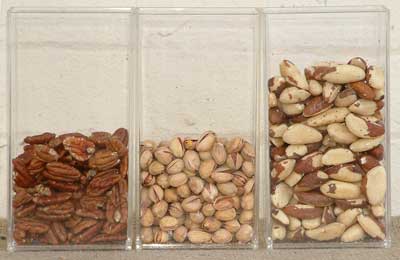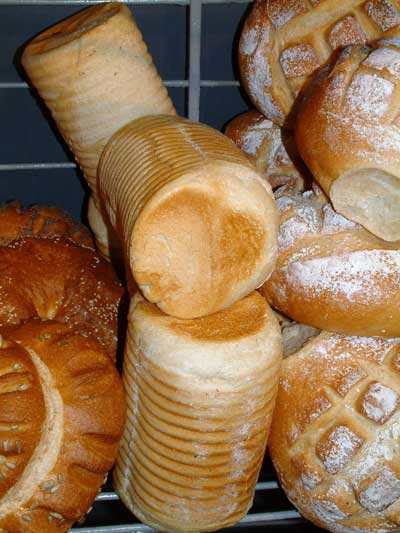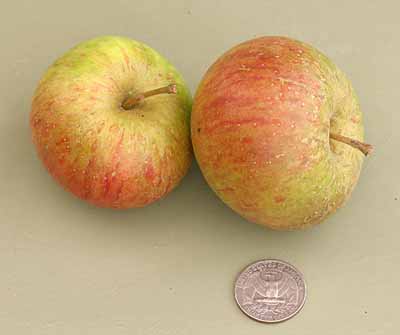A name for Newtown Pippin, an all-purpose apple with yellow to greenish-yellow skin and slightly tart, pineapple-flavoured flesh which may sometimes be mealy. It was found on Long Island in the 1700s having arisen on the estate of Gershom Moore in Newtown and arrived in England some time after a parcel was sent to Benjamin Franklin in London in 1759. It needs greater warmth than England affords. This late-season variety is harvested from mid- to late October in South-East England and is at is best from December to January.

The pistachio nut is the fruit of a small tree which originated in Central Asia, probably eastern Syria, but which is now widely cultivated. Just before harvest pistachios are enclosed in a green and magenta fleshy cover. These are the very best, if you can get them. However, fresh pistachios are rarely seen, mainly because they have a short shelf-life. They are usually hulled and dried, after which they are either roasted or roasted and salted. For cooking use the ones which are not already salted. They are sold in their creamy beige shells, which split as they ripen. The shells should be removed and the purple papery skins rubbed off revealing the bright green kernels within, the greener the better. They are related to both the cashew and the mango. We used to shoot them from the trees in Limnos with an air gun.

A barrel loaf baked in a special ridged tin so that it is marked, like a caterpillar with short segments, all down its length for ease of slicing.

A barrel loaf baked in a special ridged tin so that it is marked, like a caterpillar with short segments, all down its length for ease of slicing.

A variety of russet eating apple raised by Mr White who worked for Lord Foley of Stoke Edith in Herefordshire around 1785 from a Golden Pippin seedling. It is a distinctive oblong conical shape. In good years it has a pronounced flavour of pineapple. This late-season variety is harvested from early October in South-East England and is at is best from October to December.

A small eating apple with crisp, juicy, aromatic flesh and yellowish-green skin flushed and striped with red and some russet. It was raised at NFT, Royal Horticultural Society at Wisley in 1947 probably from a Cox's Orange Pippin or Sunset seedling. It received the Royal Horticultural Society First Class Certificate in 1972 and the Award of Garden Merit in 1993. This late-season variety is harvested from early October in South-East England and is at is best from December to March.